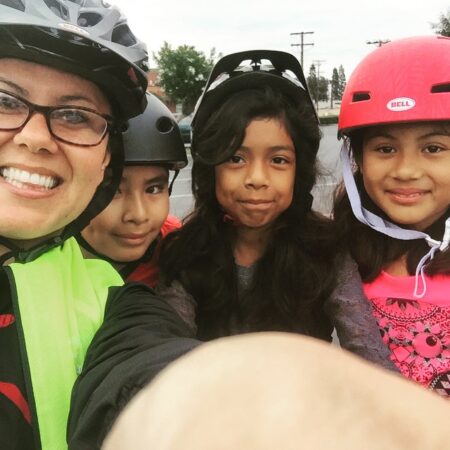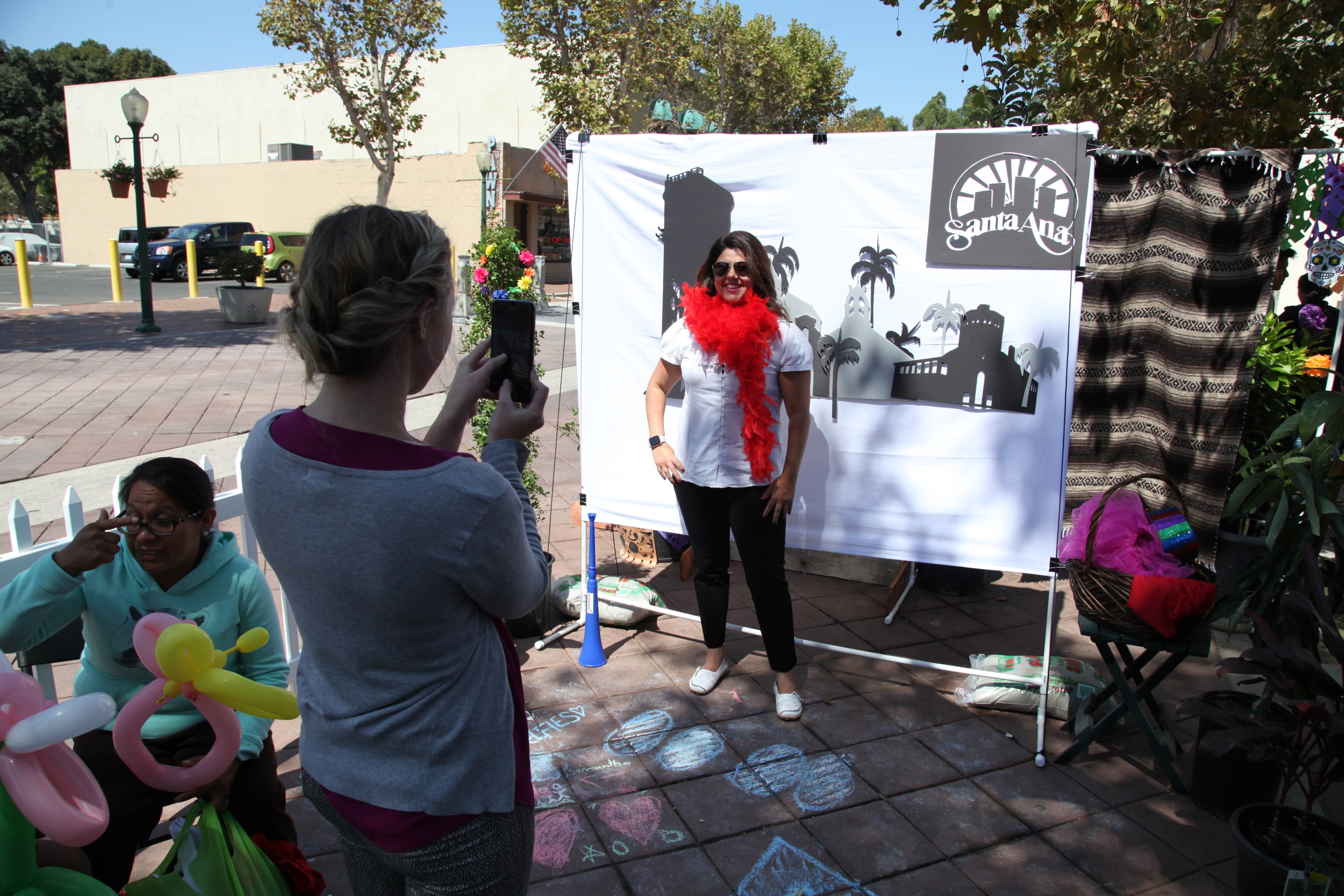Note: GJEL Accident Attorneys regularly sponsors coverage on Streetsblog San Francisco and Streetsblog California. Unless noted in the story, GJEL Accident Attorneys is not consulted for the content or editorial direction of the sponsored content.
In the midst of a very busy week, California Governor Gavin Newsom announced the appointment of a new California Transportation Commissioner, Michele Martinez of Santa Ana. Martinez comes with a wide-ranging background, having served as an elected official, a nonprofit director, and a consultant. She is known as a staunch champion of walking, bicycling, transit, and affordable housing. She comes to the commission with a strong background in leading and facilitating community empowerment, as well as a clear understanding of how transportation funding works - and how it needs to shift.
"Transportation funding is so complex," says Martinez. "That's why we need everybody at the table; it's important to hear all perspectives. And not just of advocates - whose perspective is important - but also local and regional officials."
Martinez spoke with Streetsblog recently to talk about her appointment and about how she hopes to be useful in her new position. The CTC plays a major role in allocating transportation funding in California, greatly influencing what modes of transportation are supported and how. The Commission, like many institutions right now, is undertaking a process of assessing how equity and racial justice are affected by their decisions, and Martinez is fired up to join that conversation.
"You can't talk about equity and social justice without talking about transportation," she said. "Some of our current housing and transportation problems exist because we did not talk about these issues together from the beginning."
While past decisions have led to racial injustices, the key is to think about what to do moving forward, she said. "When we talk about it we have to lead with equity, because of who is impacted by transportation investments - largely people of color" who are largely invisible in the decision process.
Either we lead by ensuring equity and multimodal balance, or we will continue to struggle with congestion, she said. "Equity does not mean grow more of the same," she said. "We have to talk about sustainability. We know today that no matter how much we build, our roads are still congested. So we need to find a way to build sustainably," not blindly "handing out the credit card" just to balance out the transportation picture.
When Martinez served as president of the Southern California Association of Governments (SCAG), she recognized the importance of listening to advocates. During the process of creating the 2016 Regional Transportation Plan, she was not merely open to their ideas, but insisted that the SCAG board hear from people advocating for more funding for active transportation.

"Becoming president of SCAG - I never dreamed I could do that," she said. "But it wasn't about me, it was about the region. I wanted to bring people together for solutions. It was about all of us. We can always learn from each other - and unlearn," she said. "This is a key point! I wouldn't understand what I know now about active transportation if not for advocates."
Martinez said she started riding a bike in 2010, and "was almost killed twice. It's not safe!" But it made her want better riding conditions, for herself and her community members - and in the region. "That's why I joined SCAG," she said. "I started at the local level, and was able to build up to push for active transportation at the regional level."
At SCAG, she also supported work being done to bring accountability to the strategies the region was deploying to meet its greenhouse gas reduction targets. Advocates say she understood the significance of S.B. 375, the law requiring regional governments to address the link between transportation and land use planning, and was willing to say so publicly. She supported the goals of the law, and helped lead the way for Southern California to head in the right direction.
However, years later, none of the state's regions are anywhere close to meeting their targets.
When asked what she could do - in her new role - to help meet these targets , Martinez made it clear that she is very new in the role and still learning what that means. But, she said, "we need to make sure that there is alignment between climate goals and transportation funding - these issues need to be integrated. If you just focus on single parts, like housing or climate or transportation, and are not explicitly connecting them, it won't work."
"I can be relentless," she said. "I'm a hardcore advocate for tying these together, but I'm also a newcomer and don't want to step on work that's already being done. What's clear is that it's time to speak up and to advocate for people who have not been at the table. We need to ensure that everyone's perspective is included in these decisions."
"We need to reimagine what transportation is in California," she said. "What we do with our transportation investments will lead the way on other issues, like climate change and housing. We need to change the narrative, because it all stems from transportation decisions."
Also, she says, no one can do it alone. "I have always had the belief that we have to turn to each other." That's one reason she helped create the Active Transportation Leadership Program, she said. "No one understood the transportation funding picture. I got it -- but the community needed to understand. We've got to get the community involved."
The ATLP brought together youth, and later, a multi-age group of Santa Ana community members, to create a platform for the kind of transportation infrastructure they wanted to see in their neighborhoods. They then got training to advocate for it at the city and regional level.
"We need everybody at the table; it's important to hear all perspectives," said Martinez. "Not just of advocates - who are important - but also local and regional officials. In California, not all communities are equal. This is an opportunity to start honing in on that, bringing those voices to the table."
"I find that when people get together and talk, there are always some commonalities," she said, "which we find by being open, and listening to each other. And it's also important for me to add my perspective to the discussion."
Martinez calls herself "a dot connector" who brings people together, but also makes connections among policies and investments. "Transportation investments will lead the way for housing investments that can align with the governor's goals on climate change and housing," she said. "I want to ensure that whatever we do at the CTC is connected to climate and housing, regardless of the legal restrictions on S.B. 1 funding. Other money we have has to be invested to improve transportation for everyone," she said.
As for the timing of her appointment, Martinez is clear that the conversations she wants to have cannot be put off. "People desperately want to get 'back to normal' - but what will 'normal' look like?" she asked. "People are riding bikes and walking more [during COVID shutdowns], and they are seeing the need for local investments in better infrastructure so they can be safe in their own neighborhoods."
"People will want to stay in their neighborhoods, and not have to use cars," she added. "Of course cars are not going away any time soon. But we have to adapt, we have to be nimble, and we have to be realistic. It's time to utilize our assets wisely. Most of everything we do depends on a vehicle - but right now we're not driving as much."
"We have to maintain the infrastructure that we already have," she said, "and at the same time to realize the co-benefits of it. The CTC has the ability to dream with stakeholders about what the next decade can be like. Now is the time to have these conversations."






